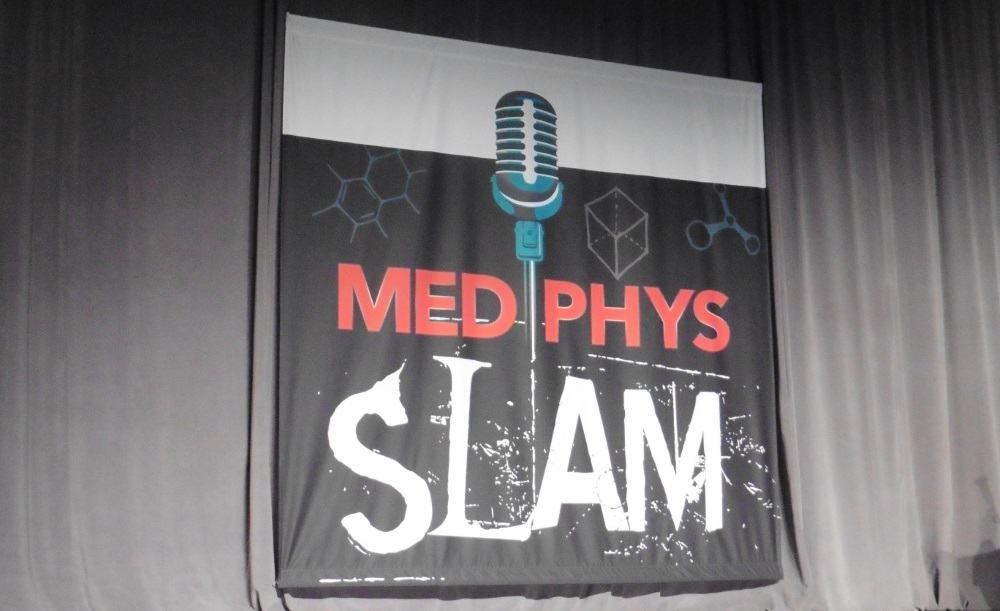
Effective communication skills are an important factor for anyone pursuing a scientific career. But for those training to work within medical physics – who will inevitably come into contact with patients, their relatives and healthcare staff – the ability to explain complex ideas and concepts in a clear and understandable manner is even more pressing.
“Patients will have questions, and you’re the physics expert in the room,” says John Ready from UC Davis Health. “You need to be able to explain what’s going on, and why, in terms that the patient can understand.”
With this in mind, Ready initiated a brand new session at this year’s AAPM Annual Meeting: the MedPhys Slam. The Slam is a communication competition in which participants – PhD students, medical physics residents and postdoctoral researchers – have just three minutes to describe their research project in a compelling and coherent manner.
Ready explained that he had seen a similar event whilst he was a graduate student at UC Berkeley, and thought it would be a great idea to bring this to AAPM. So a year ago, he invited all the AAPM regional chapters to hold preliminary competitions, and the winner of each of these was invited to the main event in Nashville, TN. “The idea is to see how well you can communicate in three minutes, what your research is, why it’s important and what’s the impact,” he told Physics World.
The competition was judged by a panel of non-medical physicists, including two local journalists, a physics teacher, a PhD student studying learning, teaching and diversity, and country music singer and songwriter Matraca Berg. The judges heard talks on topics including how to solve proton therapy’s range measurement problem, how a robot could make us better marksmen, and even why we should replace anaesthesia with Netflix.
And the winner is….
The 16 participants were judged on three categories: comprehension and content, communication and engagement. The overall winner was Ashley Tao, a medical physics resident at the Mayo Clinic, who gave a talk with the intriguing title: “The textbook was wrong – the X-ray tube does contribute substantially to occupational radiation dose during fluoroscopy”.

Tao explained that while it is generally assumed that dose to operators during fluoroscopy is mainly scattered from the patient, in actuality, the X-ray tube can contribute a non-trivial percentage of the total dose. She proposed the use of a ring of lead to cover the X-ray tube and showed that, in the particular set-up examined, this could decrease tube scatter by 50%. Tao suggested that radiation protection guidelines are adapted to these findings and emphasized the need for radiation safety education.
The judges also awarded a runner-up prize, to Eric Morris, a PhD Candidate at Henry Ford Health System. Morris described a method for automatic segmentation of cardiac substructures, to improve treatment planning of left breast radiotherapy and reduce dose to the heart.
The idea is to delineate radiation-sensitive cardiac structures and steer radiation away from these. However, planning CTs exhibit poor contrast in the heart, while MRI – which can clearly visualize substructures – is not routinely available for every patient. Instead, Morris and colleagues used fused MRI and CT scan data to develop a model that predicts the location of sensitive substructures based on just a CT scan, enabling their avoidance during radiotherapy planning.
Finally, the audience also got to share their views, with an online “people’s choice” vote. The winner here was Brian Anderson, a PhD student at the MD Anderson Cancer Center. Anderson presented a technique to improve ablation treatment of colorectal liver metastases. He explained that contrast CT is used to highlight metastases prior to needle insertion for ablation therapy. However, the liver moves with the patient’s respiration and it’s not possible to keep applying contrast. Instead, he is developing individual anatomic models that detect where the disease was located and predict where it will be.
The judges pointed out that the most effective presentations were those that included fewer slides and were explained in a way that non-physicists could understand. They noted that a relaxed pace of speaking is particularly important when using complex language. “I thought the talks were fascinating and exciting, very enlightening,” said Berg.



